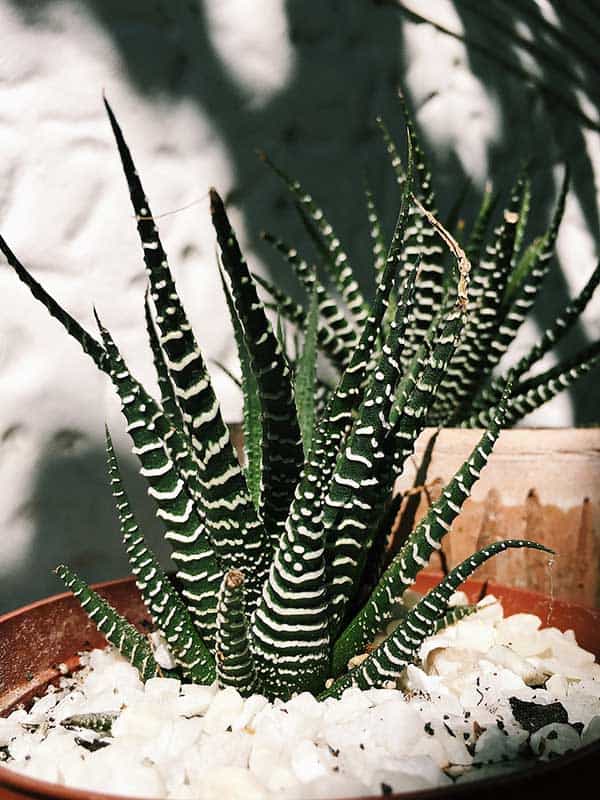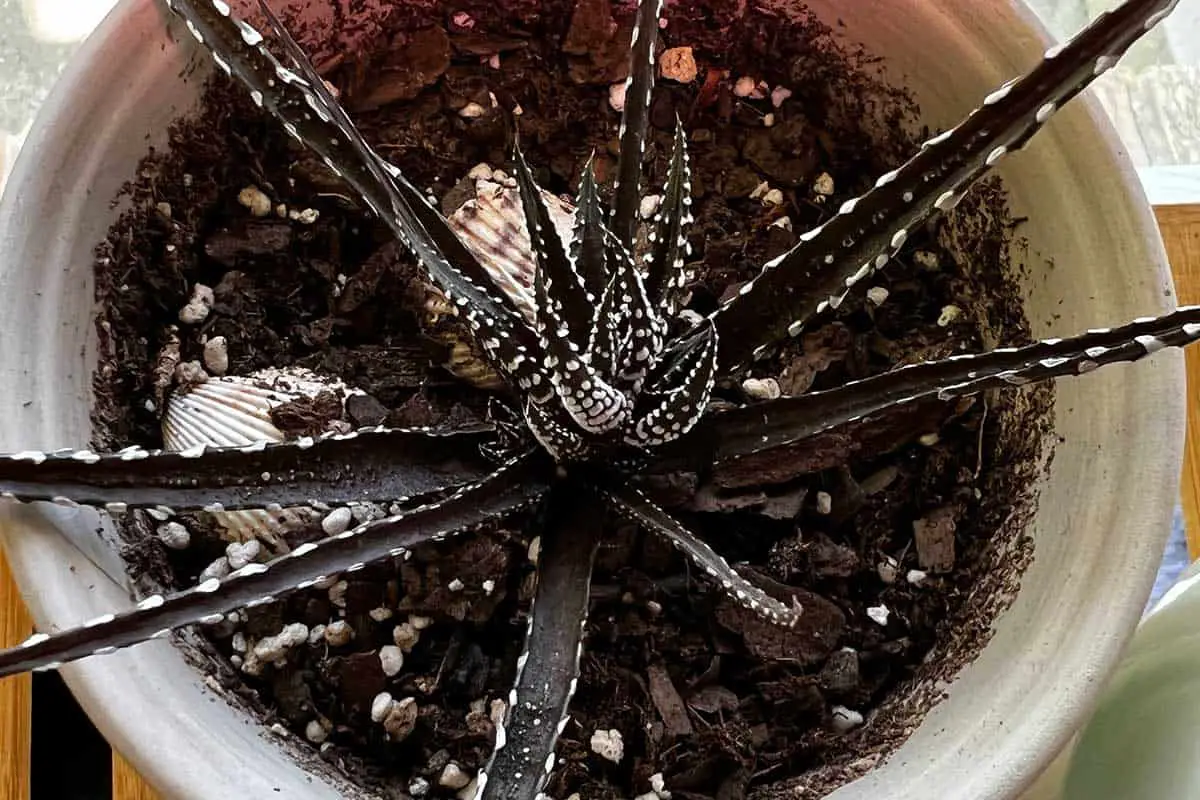This page may contain affiliate links. If you click and buy, we might get a small commission at no cost to you.
Zebra plants (Haworthiopsis fasciata) are small and compact succulents that are common household plants perfect for beginners. Naturally, it has dark green leaves with horizontal stripes when cared for properly. If you are wondering, why is my zebra plant turning brown? There could be various reasons, including some that are natural and others that can be a concern for your plant. Read on to learn about why the leaves can turn brown, what to do, and how to care for this beautiful succulent.
Key takeaways
- Zebra plants can turn brown from over-watering, underwatering, sun stress, or excess airflow
- You can save your zebra plant from root rot and prevent further browning of leaves
- Taking proper care of your zebra plant includes watering every 2-3 weeks and only after the soil is completely dry
Why is my zebra plant turning brown?
The most common reason for browning zebra plants is sun stress. If the temperature has been very hot, you are under-watering, or your plant is getting too much full or direct sunlight, the plant can get brown, crispy tips. Sometimes the leaves at the base can get brown naturally and fall off on their own due to the aging process of the plant.
However, if your zebra plant has mushy brown leaves, you are probably over-watering. This can lead to root rot which is harmful for the plant. Sometimes the overwatering occurs because the soil is slow to drain or your zebra plant’s roots are blocking the drainage holes of your container.
Can airflow turn zebra plants brown?
Yes, it can. Your zebra plant may be turning brown because of too much airflow, such as cold drafts hitting your plant. You want to keep them indoors when it’s cold outside and make sure they are kept away from air vents, either hot or cold.
Can you save a plant with brown leaves?
Yes, you can generally save your plant but will need to know what is causing the leaves to brown. If your zebra plant has brown mushy leaves, you’ll want to check the roots to make sure root rot hasn’t set in. You can do this by removing the soil and seeing if there are soft roots that easily fall apart. If the roots are rotting, remove all brown leaves and rotted roots, repot your plant and reduce the amount of watering.
If the tips are brown, you may be underwatering or giving the plant too much direct sunlight. Try moving the plant to an area with indirect sunlight and water only a little bit more. Sometimes you might want to replace the potting soil, especially if it stays damp and is slow draining to help you provide the right balance of water for your plant.
Should I trim brown leaf tips?
Yes, you can trim the brown leaf tips with some caution. Once the leaf tips are brown due to sun stress, you can do nothing to get it back to a normal color. Cutting or trimming can help make your plant look better. However, it can open up the leaves and make your plant more vulnerable.
Leaving the brown tips might not look pretty, but they won’t harm the plant. Zebra plants are also easy to propagate so you can get new plants without brown leaves with minimal effort.
How do you care for zebra plants?

Zebra plants prefer shade or partial sun, such as areas that get 4 to 6 hours of sunlight in the morning. It’s best to water your zebra plant using the “soak and dry” method, meaning the soil should dry out completely between waterings. Well-drained and good-quality soil can also help prevent overwatering.
They aren’t cold hardy. The best growing zone is areas that don’t reach below 30° F. However, if you live in areas where it gets cold, you should plant them in a container where you can bring them indoors. Make sure the container has drainage holes at the base to prevent root rot.
How often should you water a zebra plant?
Typically you only need to water your zebra plant once every 2 or 3 weeks. During the summer, this timeframe can be once a week when there is more light, and during the winter, it could be once a month with lower light. Regardless of how many times you water your zebra plant, you must be sure the soil has completely dried out between watering times.
Conclusion
Your zebra plant can turn brown due to sun stress, under watering, excess air flow, or over watering. Depending on whether the leaves have crispy brown tips or are mushy brown there are different ways to help save your plant and prevent further browning. Sometimes the browning occurs naturally as the plant ages and there is nothing to worry about!


